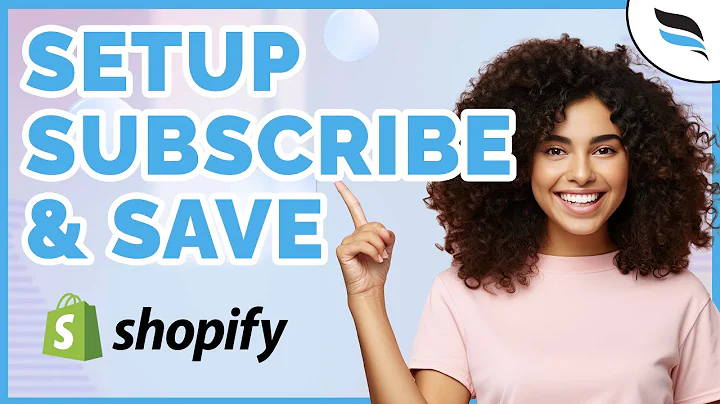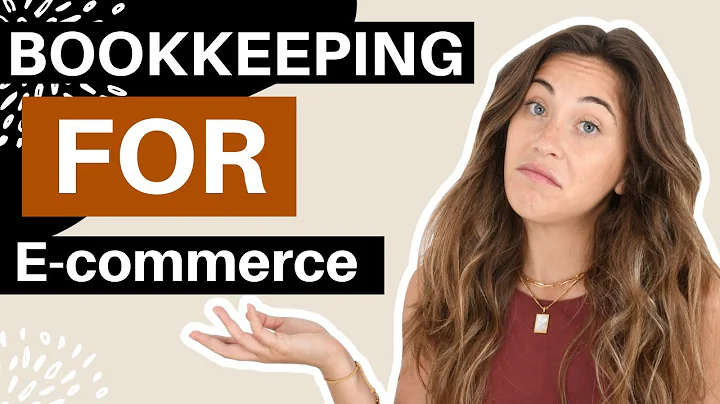Choosing the Right Print on Demand Sales Channel
Table of Contents:
- Introduction
- Understanding Print on Demand
- Artist or Contributor Marketplaces
- Redbubble
- Amazon Merch on Demand
- T Public
- Independent Seller Marketplaces
- Etsy
- eBay
- Amazon Seller Central
- Walmart
- Selling Through Your Own Website
- Shopify
- Starting a Shopify Store
- Startup Cost
- Monthly Cost
- Barriers to Entry or Ease of Entry
- Competition
- Customer Base or Traffic
- Level of Control
- Fees and Profit Comparison
- Conclusion
- FAQ
Understanding the Different Sales Channels for Print on Demand Products
In the ever-growing world of e-commerce, selling print on demand products has become a popular and profitable venture for many. With a plethora of online sales channels to choose from, it can be overwhelming to determine which one is the best fit for your business. This article will break down the key differences between the three main categories of online sales channels for print-on-demand products, helping you make an informed decision.
1. Introduction
If you're a designer looking to expand your reach and sell your creations on various products like t-shirts, mugs, sweatshirts, and tote bags, you need to find the right online sales channel to start with. The print-on-demand business model has gained immense popularity in recent years, and there are three main categories of online sales channels for selling print-on-demand products: artist or contributor marketplaces, independent seller marketplaces, and selling through your own website.
2. Understanding Print on Demand
Before diving into the details, it's essential to have a good understanding of the print-on-demand business model. Print on demand allows you to upload your designs onto various products without worrying about inventory or fulfillment. When a customer purchases a product with your design, it is printed and shipped on-demand. This model eliminates the need for upfront costs and allows you to focus on creating and promoting your designs.
3. Artist or Contributor Marketplaces
Artist or contributor marketplaces are platforms where you can easily get started by creating an account and uploading your designs onto products. These platforms handle all the transaction and customer service aspects, leaving you with minimal responsibilities. Some popular artist or contributor marketplaces include:
Redbubble: Redbubble offers a wide range of products, from clothing to home decor. You can upload your designs, set your prices, and earn a commission for each sale.
Amazon Merch on Demand: Amazon Merch on Demand is an invitation-only program where you can upload your designs to be sold on Amazon. While it has similarities to artist marketplaces, there is an application process to become a seller.
T Public: T Public specializes in apparel, accessories, and home decor. As a designer, you can upload your designs, set your prices, and earn a commission when your products sell.
4. Independent Seller Marketplaces
Independent seller marketplaces provide more control and branding opportunities for sellers. While you have your own storefront, you are still part of an existing marketplace. Some popular independent seller marketplaces include:
Etsy: Etsy is a platform known for handmade and vintage products. You can open your own shop, customize your listings, and handle order fulfillment and customer service.
eBay: eBay allows you to sell new or used products through auctions or fixed-price listings. It provides a wide-reaching customer base but requires you to handle all aspects of the business.
Amazon Seller Central: Amazon Seller Central allows you to sell products directly to Amazon's vast customer base. It offers different account options and varying monthly fees.
Walmart: Walmart has also entered the e-commerce space, providing a platform for sellers to reach a wide audience. Setting up a store on Walmart requires meeting specific criteria and vetting process.
5. Selling Through Your Own Website
Selling through your own website provides the highest level of control over your business but comes with increased responsibilities. To create your online store, you can use platforms like Shopify. Some key points to consider when selling through your own website:
Shopify: Shopify is a popular platform that allows you to build and customize your online store. It provides features like payment processing, inventory management, and various integrations.
Starting a Shopify Store: Setting up a Shopify store involves choosing a subscription plan and securing a domain name. While it offers more control, you will be responsible for driving traffic to your store and handling all aspects of your business.
6. Startup Cost
When it comes to startup costs, artist or contributor marketplaces like Redbubble and Amazon Merch on Demand have zero upfront costs. You can create an account and start uploading your designs for free. Independent seller marketplaces like Etsy may charge listing fees or require a monthly subscription.
Selling through your own website using platforms like Shopify will involve subscription costs and purchasing a domain name. The startup costs for these sales channels vary, and it's essential to consider your budget and long-term goals.
7. Monthly Cost
Monthly costs also differ across the sales channels. Artist or contributor marketplaces generally do not have required monthly fees. Independent seller marketplaces like Etsy and Amazon Seller Central may charge monthly subscription fees or transaction fees. Selling through your own website with platforms like Shopify involves subscription fees based on the plan chosen.
8. Barriers to Entry or Ease of Entry
The ease of entry varies across the sales channels. Artist or contributor marketplaces have low barriers to entry, allowing anyone to create an account and start selling within minutes. Independent seller marketplaces like Etsy and Amazon Seller Central require more steps to set up and may have additional requirements. Selling through your own website has a moderate to difficult barrier to entry, as it involves setting up a website, handling payment processing, and building a customer base from scratch.
9. Competition
Competition is inevitable regardless of the sales channel you choose. Artist and contributor marketplaces have high competition due to the ease of entry, with numerous sellers offering their designs. Independent seller marketplaces also have considerable competition, but you have more control over branding and product selection. Selling through your own website means competing against similar online stores, making it vital to focus on building a loyal customer base.
10. Customer Base or Traffic
Artist and contributor marketplaces, as well as independent seller marketplaces, provide a built-in customer base and existing traffic. These platforms attract millions of shoppers, increasing the visibility of your products. However, driving your own traffic through social media and marketing efforts is crucial. Selling through your own website requires significant effort in driving traffic because you start with no existing customer base. Engaging with customers on social media and utilizing paid advertising becomes essential.
11. Level of Control
The level of control varies across sales channels. Artist and contributor marketplaces offer minimal control, limiting the choice of products, pricing, and customization options. Independent seller marketplaces provide more control over branding, product selection, and pricing. However, you are responsible for order fulfillment and customer service. Selling through your own website gives you the most control, allowing you to customize your store, select suppliers, and set policies. However, you are solely responsible for all aspects of running the business.
12. Fees and Profit Comparison
Fees and profit per order differ across sales channels. Artist and contributor marketplaces generally have zero transaction fees, but you receive a commission or royalty per sale. Independent seller marketplaces charge transaction or listing fees, reducing your profit margin. Selling through your own website may involve payment processing fees, but you have more control over pricing and profit.
13. Conclusion
Choosing the right sales channel for your print-on-demand business depends on various factors, including your goals, budget, and level of control desired. Consider the startup costs, monthly fees, barriers to entry, competition, customer base, and level of control before making a decision. Remember that success in any sales channel requires effort and commitment on your part.
14. FAQ
Q: Can I sell on multiple sales channels simultaneously?
A: Yes, many sellers choose to sell on multiple sales channels to maximize their reach and potential sales.
Q: Is it possible to switch sales channels later if I'm not satisfied?
A: Yes, it is possible to switch sales channels at any time. However, it may involve some effort in migrating your products and establishing a presence on the new channel.
Q: How can I drive traffic to my own website?
A: Driving traffic to your own website involves effective marketing strategies such as social media promotion, search engine optimization, content marketing, and paid advertising.
Q: Are artist or contributor marketplaces only for individual artists?
A: No, artist and contributor marketplaces are open to both individual artists and businesses. You can create an account and start uploading your designs regardless of your artistic background.
Q: Can I sell products with licensed images or characters?
A: It's crucial to respect intellectual property rights when selling print-on-demand products. Always ensure you have the necessary rights or licenses to use copyrighted or trademarked images or characters.
Q: Do I need a separate business entity to sell on independent seller marketplaces or my own website?
A: While it’s not required, setting up a separate business entity, such as an LLC, is recommended when running a business to protect your personal assets and establish credibility.
Q: Can I sell my own manufactured products through these sales channels?
A: Print-on-demand platforms primarily focus on printing your designs on existing products. If you are looking to sell your own manufactured products, other e-commerce platforms or brick-and-mortar stores may be more suitable.
Q: What role does branding play in these sales channels?
A: Branding is essential regardless of the sales channel chosen. Creating a unique brand image helps you stand out from the competition and build customer loyalty.
Q: Can I offer discounts or promotions on these sales channels?
A: Yes, most sales channels allow you to offer discounts or run promotional campaigns to attract customers. The specifics may vary, so familiarize yourself with each platform's guidelines and policies.
Q: Are there any fixed shipping fees on these sales channels?
A: Shipping fees vary depending on the sales channel and the specific products being sold. Some platforms may offer fixed shipping fees, while others provide flexible shipping options allowing you to set rates based on different factors.






















